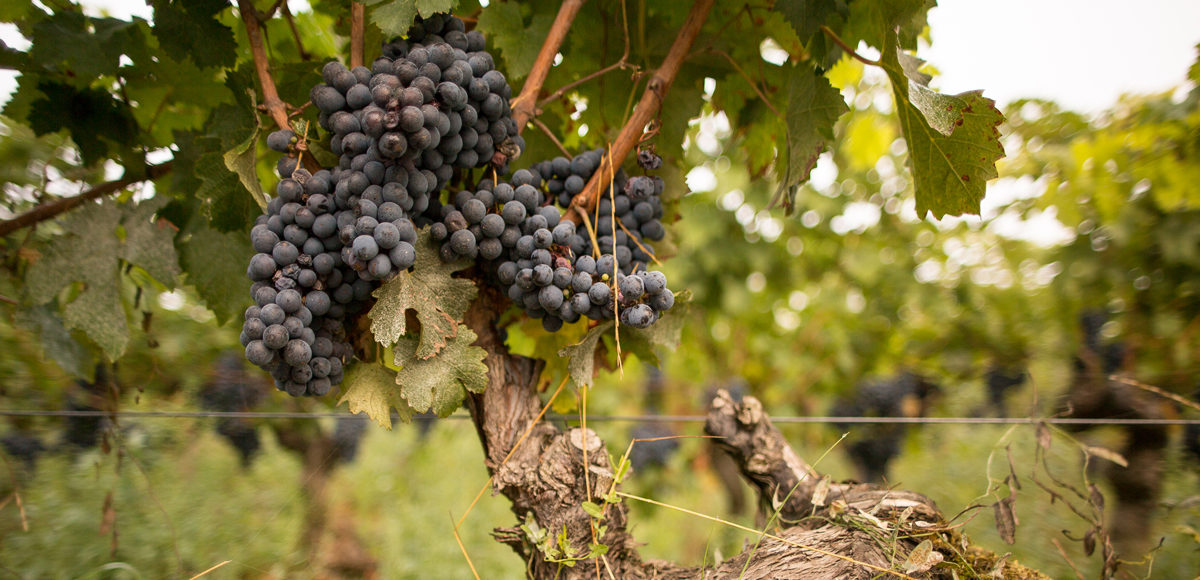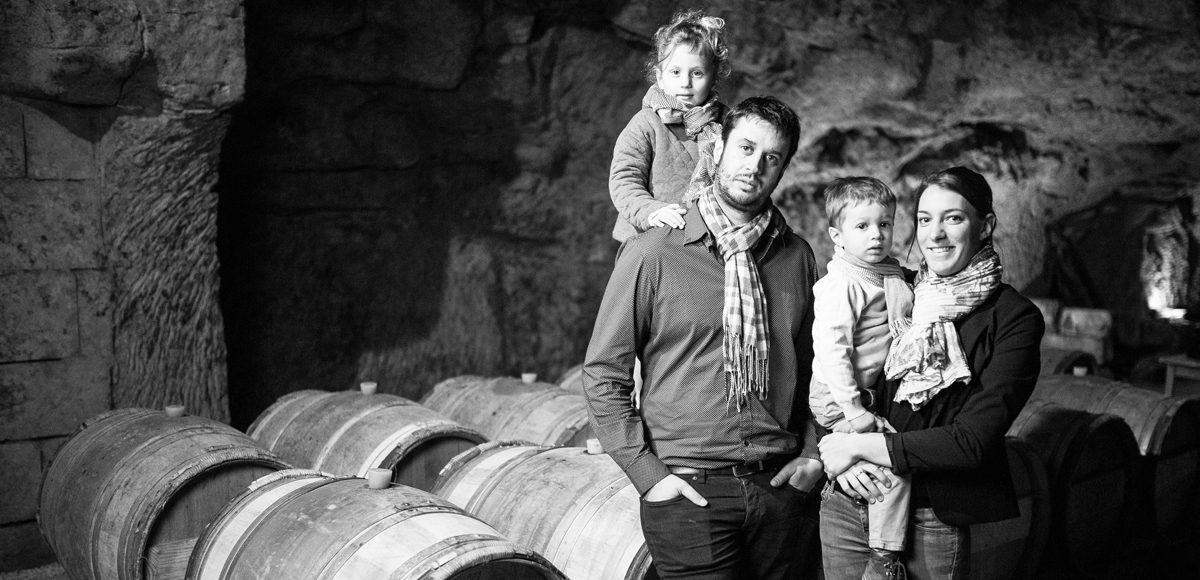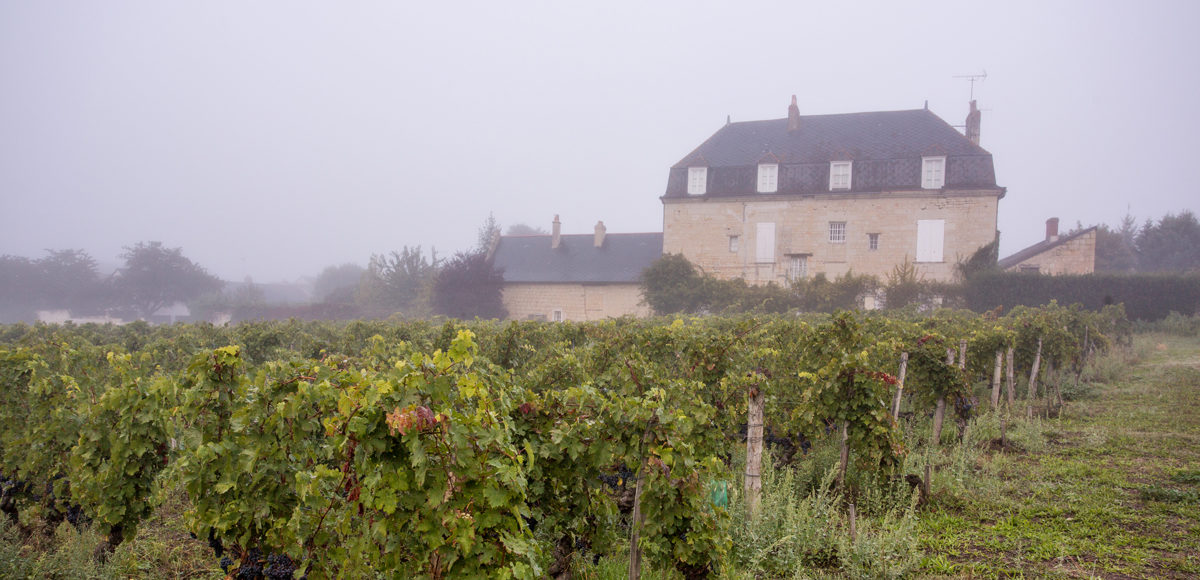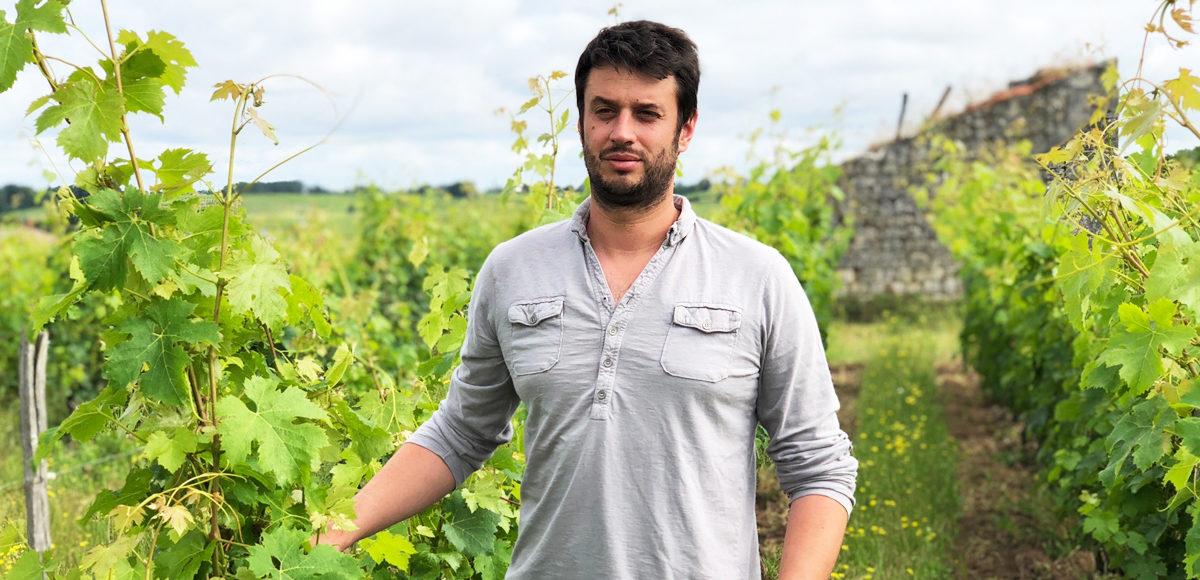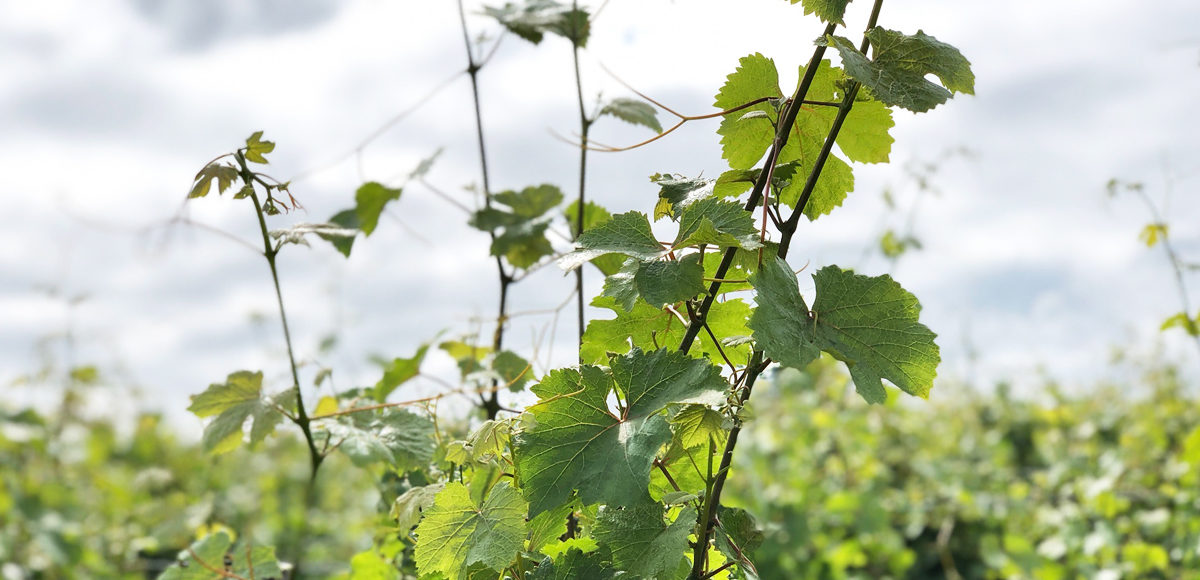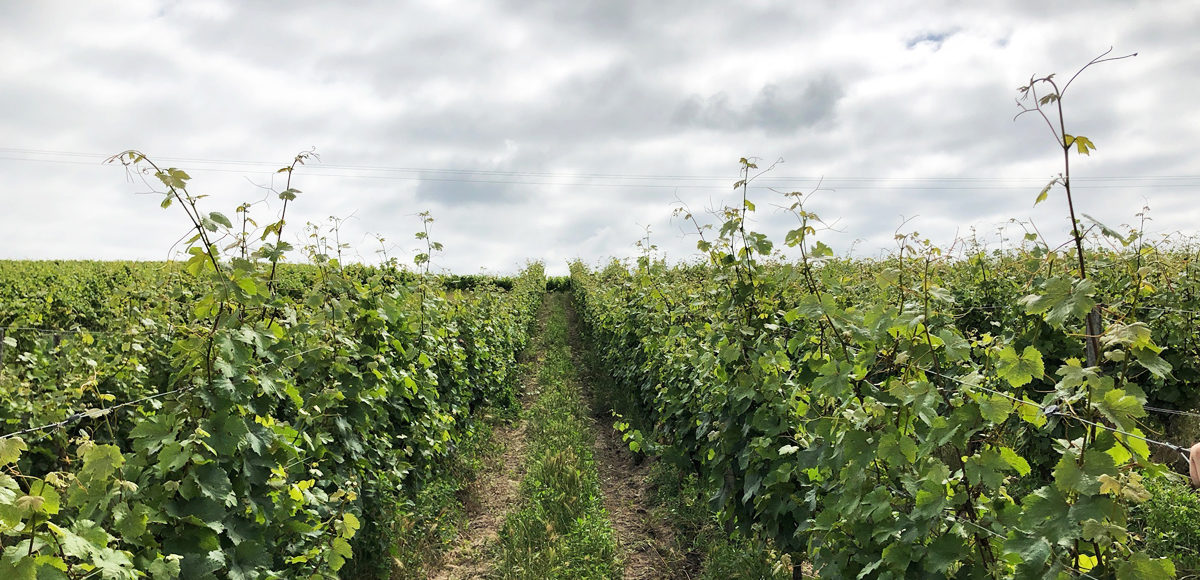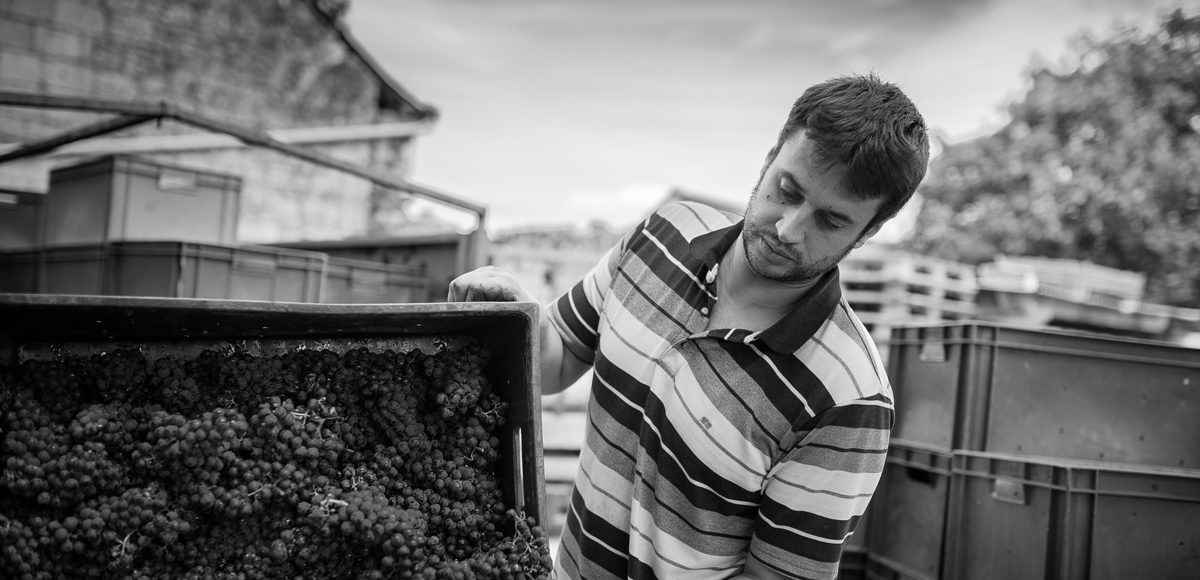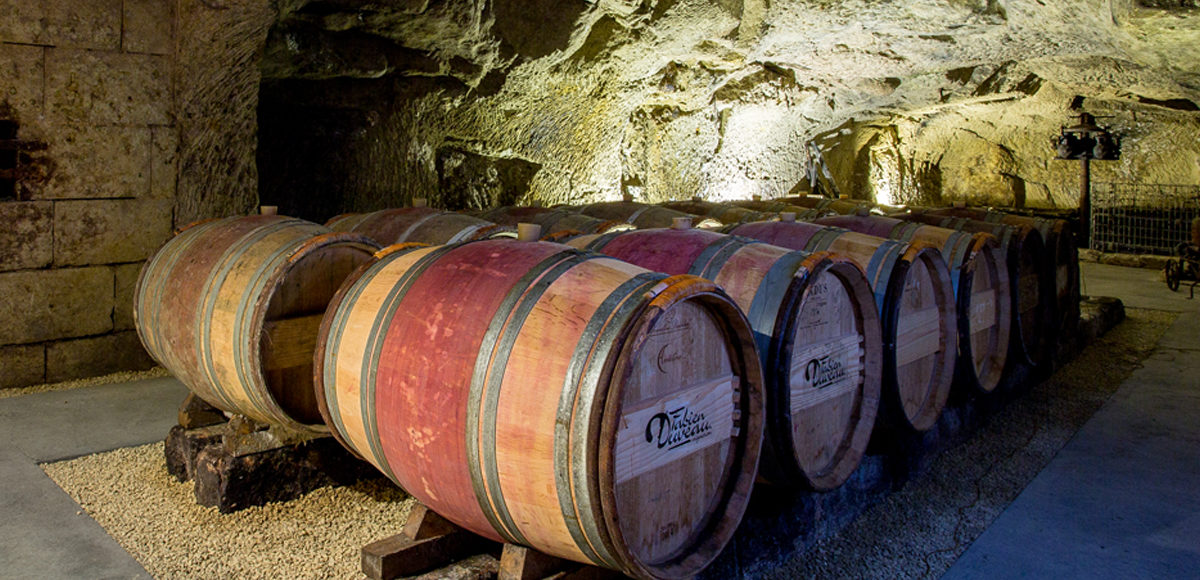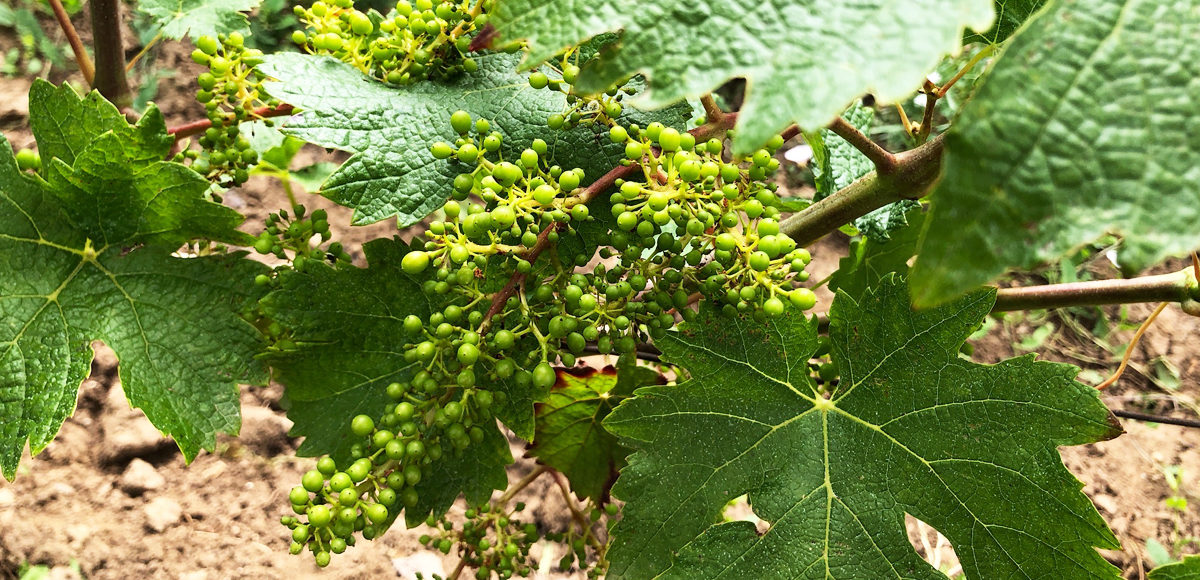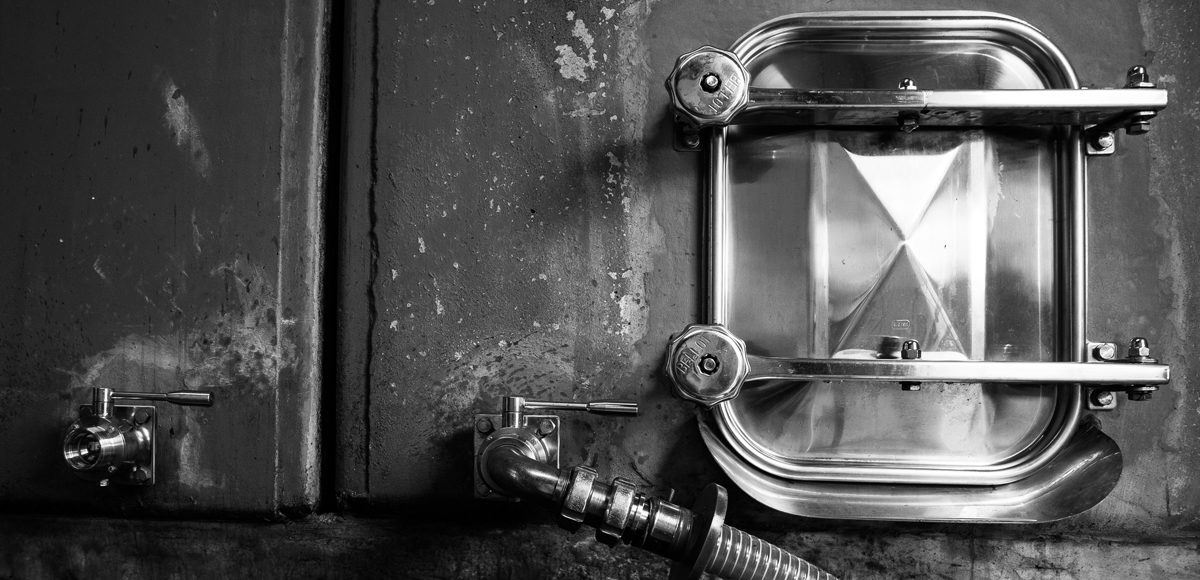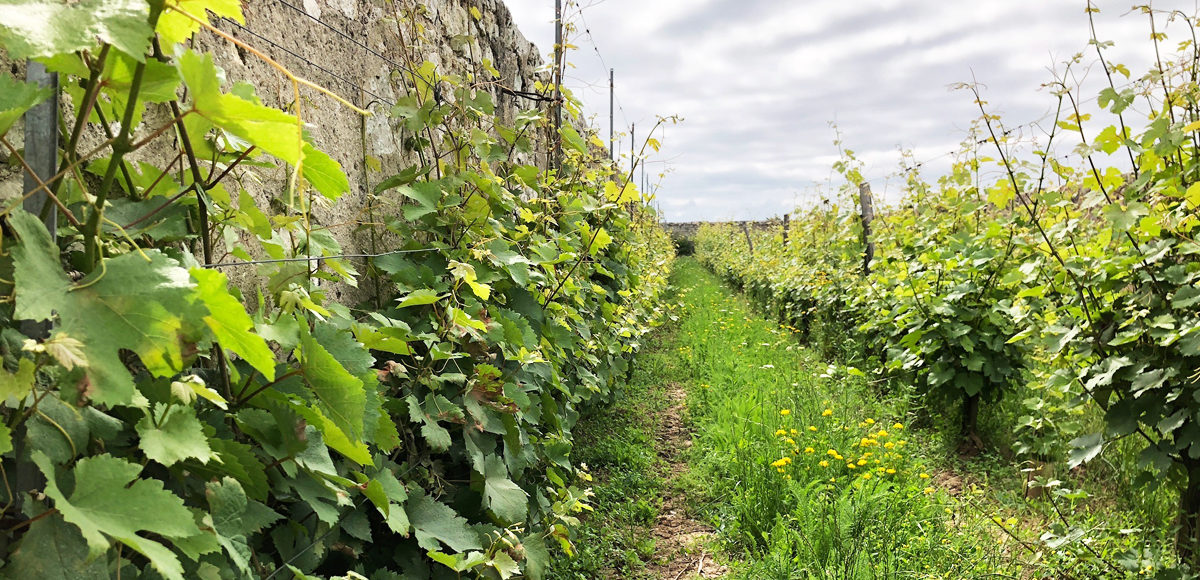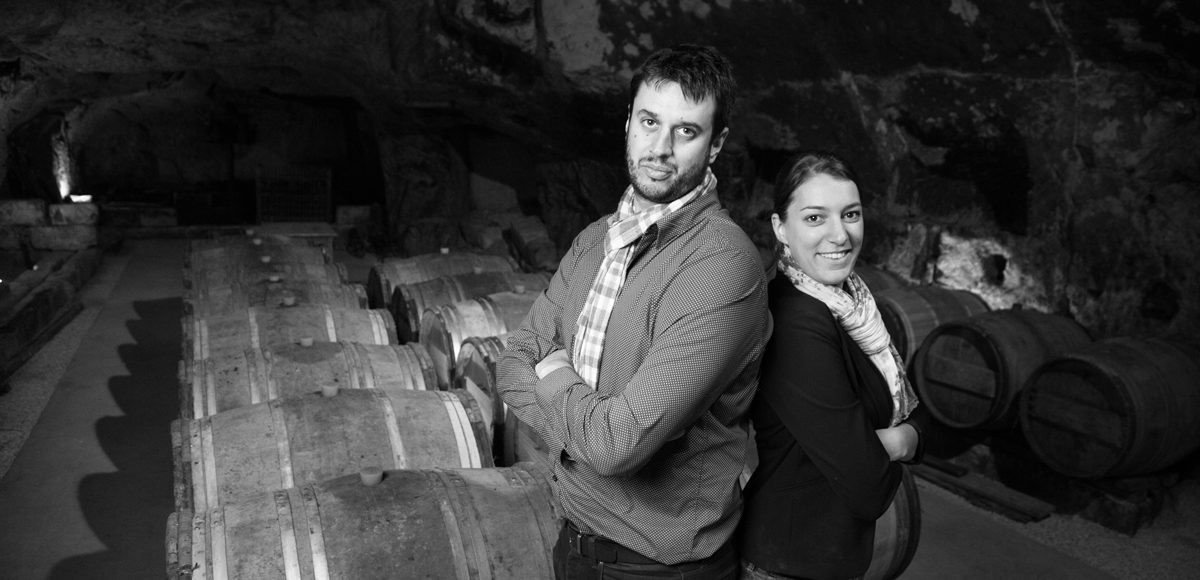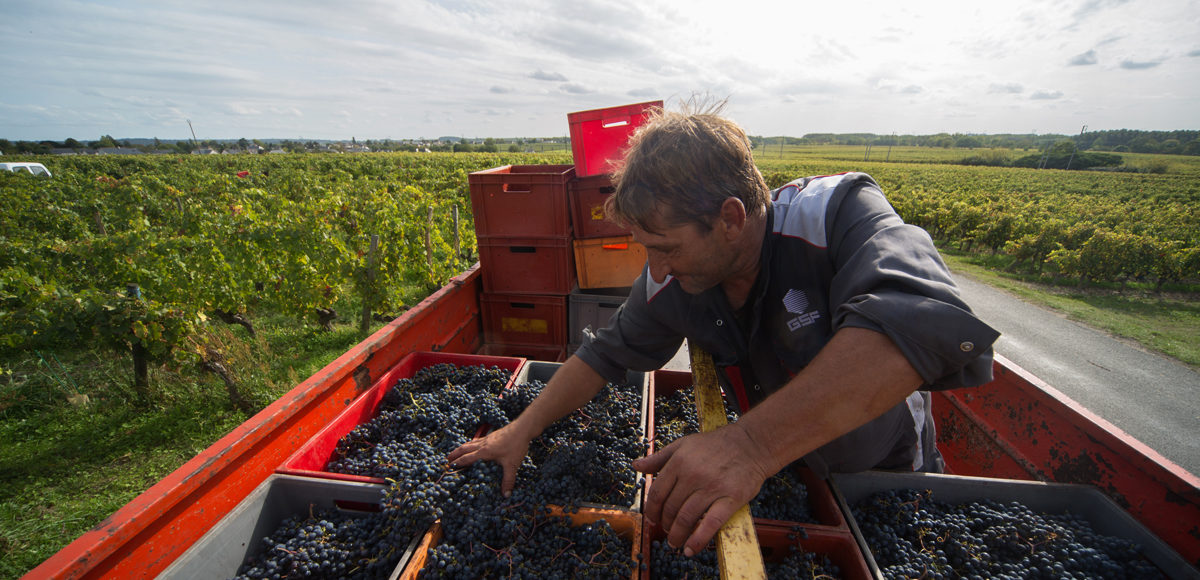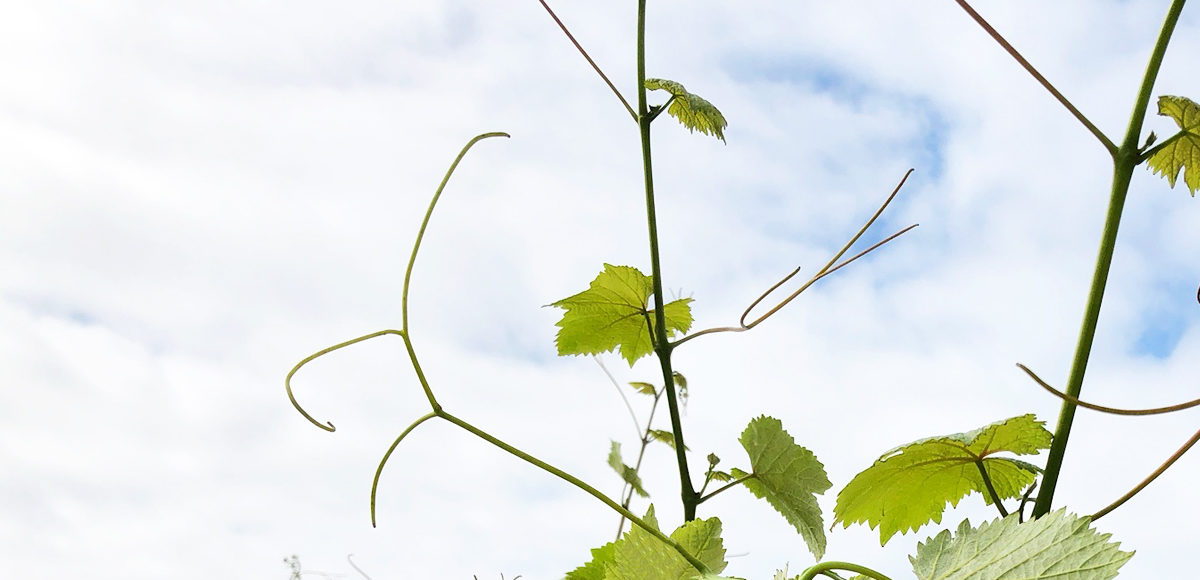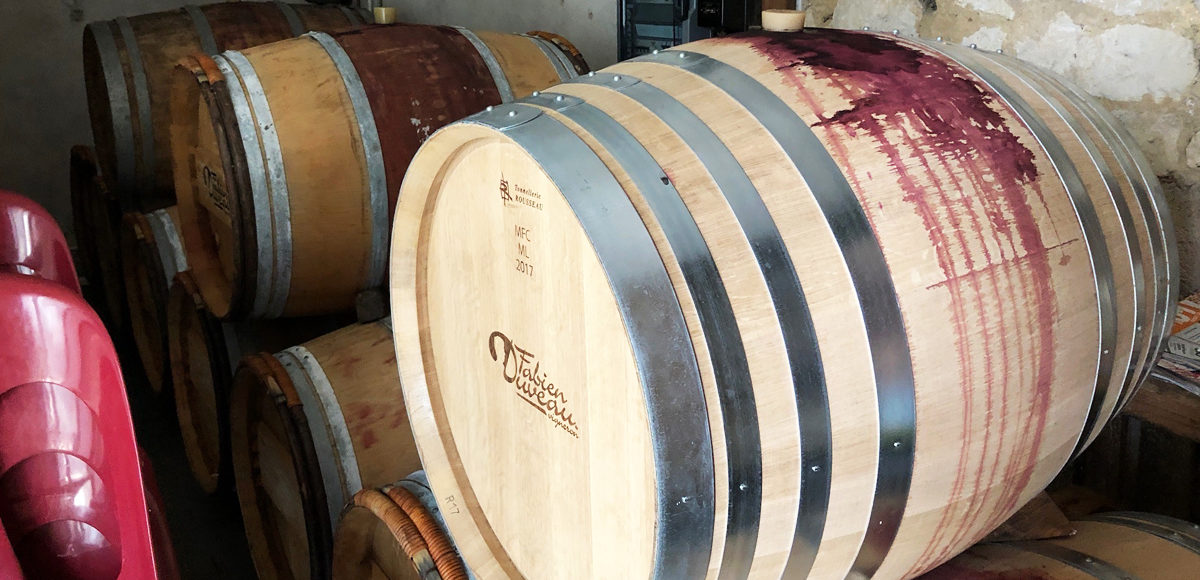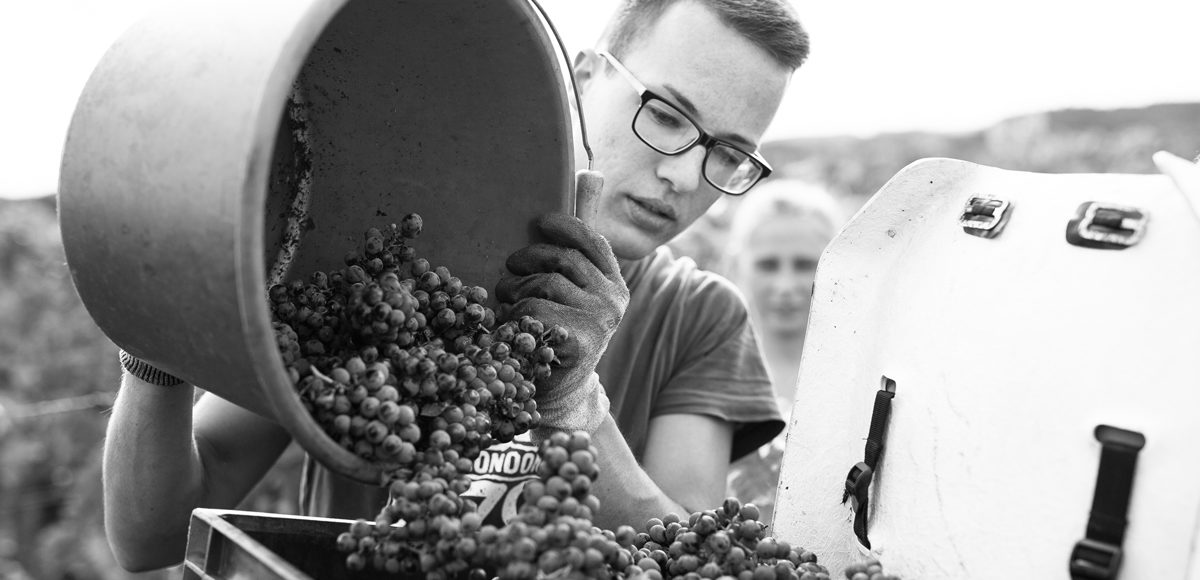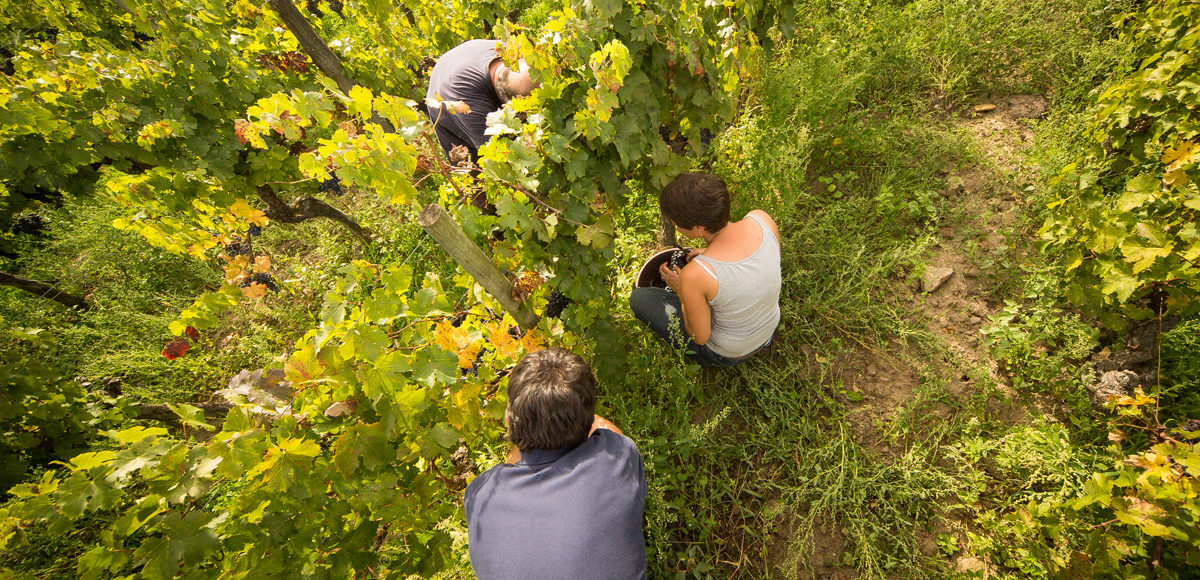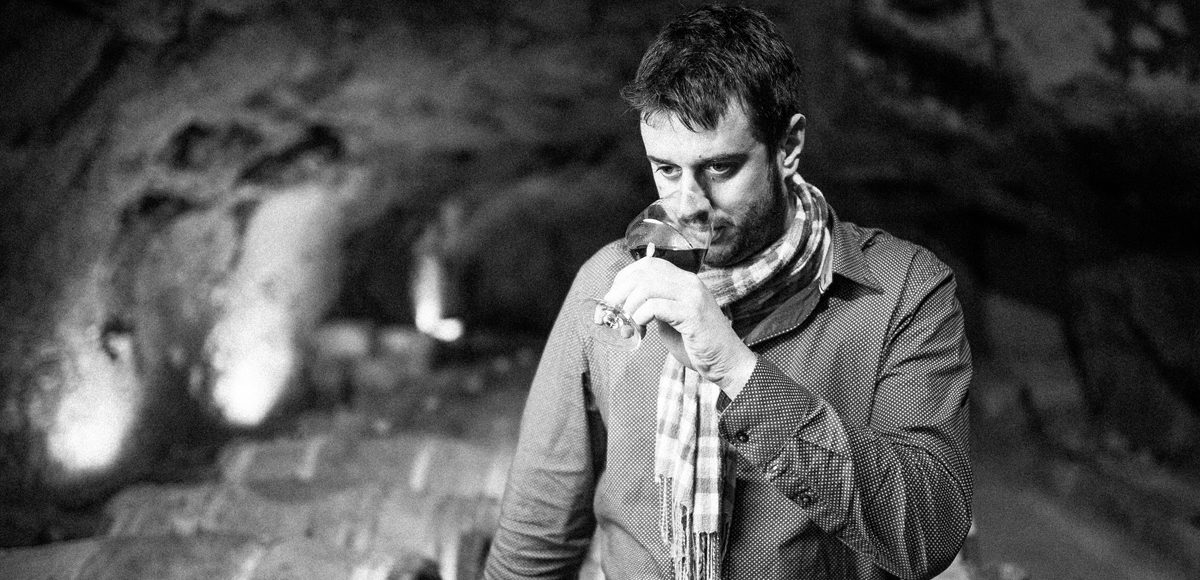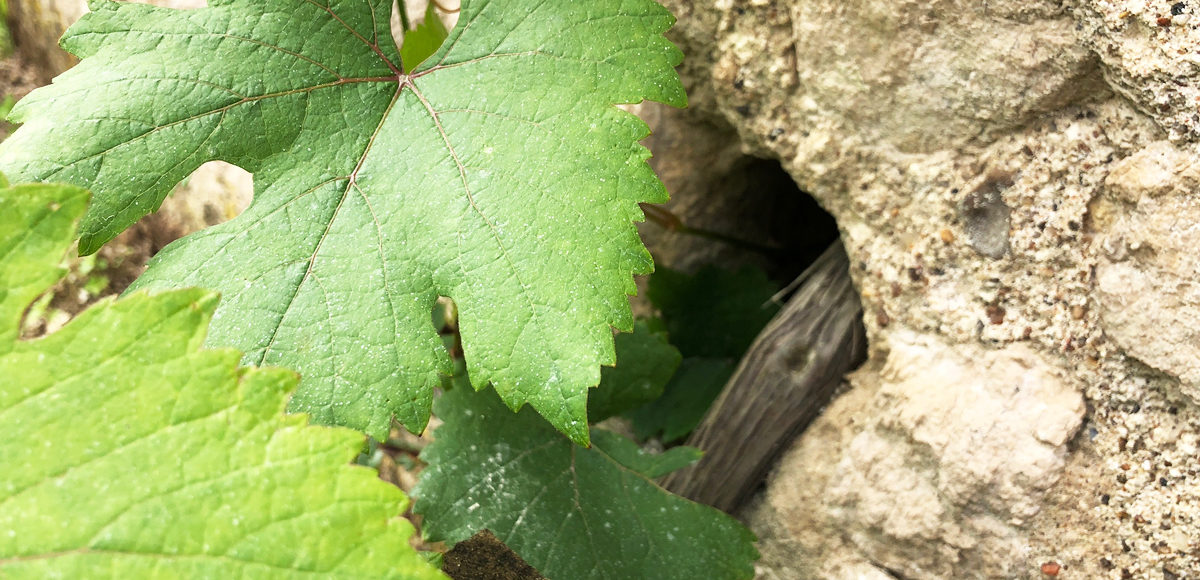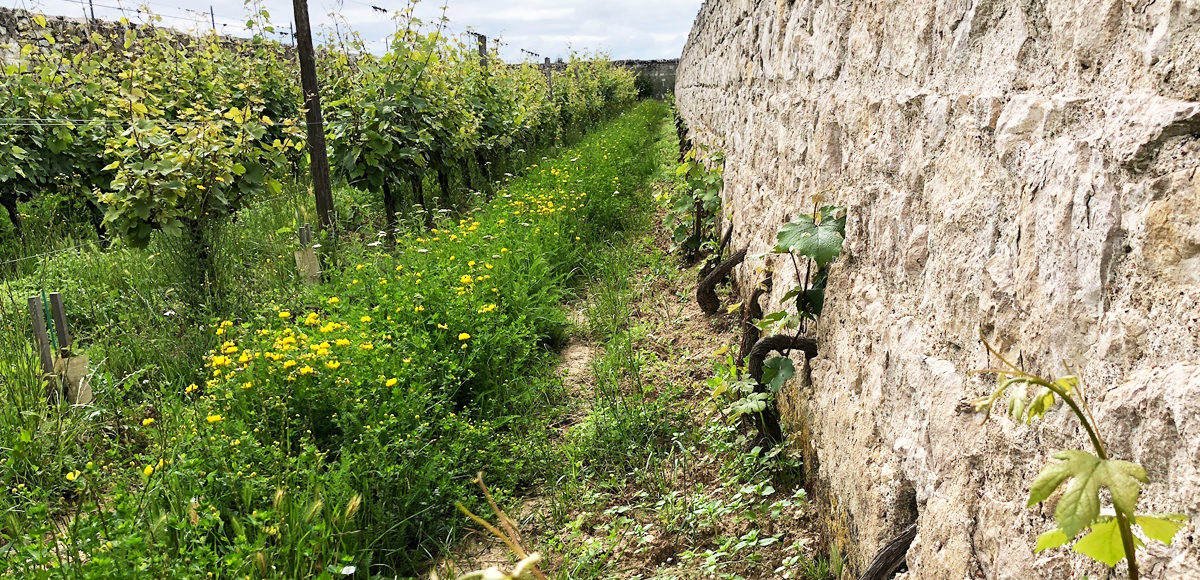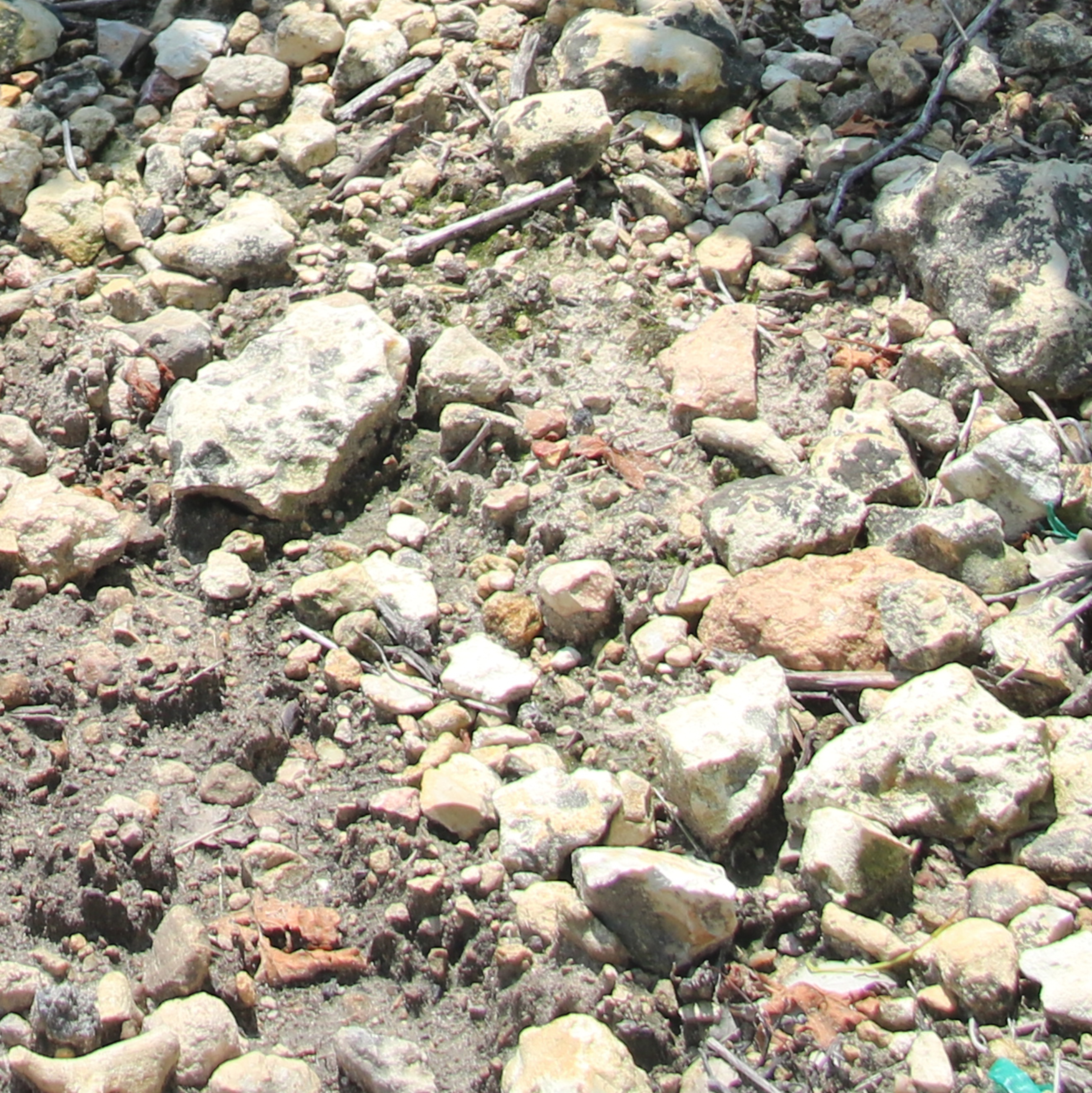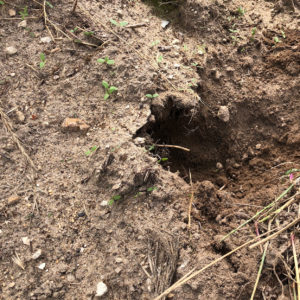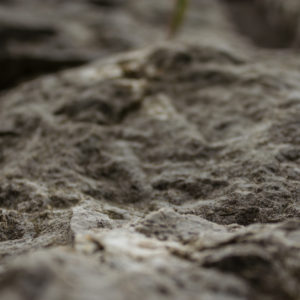“I was born on a barrel.” — Fabien Duveau
Fabien Duveau
Fabien says this with a wink. But it acknowledges his position as the 8th generation of the family to make wine in Saumur-Champigny and his dedication to his profession. Fabien regards his region, distinguished by its tuffeau bedrock and singular microclimate, as “one of the jewels of the Loire.” Here he holds some 40 parcels of chenin blanc and cabernet franc, a pair of varieties that enthrall him. As Fabien observes, “We always do better and with rigor the things that fascinate us.” Lately, that has meant drilling into the character of his single parcels.
Having worked among these parcels his whole life, he intuits the temperament and inclinations of each. Since taking over the domaine from his father in 2008, he has converted all of the family holdings to organics, a move he regards as his decisive thumbprint on the domaine. His “desire for clean farming and the preservation of the natural heritage” extends to his cultivation of biodiversity in and around the vineyards. In the cellar, his minimalist approach results in wines that express “the complex nature of the land and the know-how of its winemakers.” His intuition, dedication, and innovative perspectives infuse his wines with a freshness and delicacy that mark them as vibrant, eloquent examples of what Saumur-Champigny wines are at heart.
Growing up, Fabien “always knew” he wanted to be a winemaker. Since childhood, he worked alongside his father and grandfather since childhood. He studied at the nearby lycée, then left home for a stage in Bergerac, four years at Château Grand Corbin-Despagne in St. Émilion, and later a harvest internship at Rutherford Hill in Napa. He returned to Saumur-Champigny to take over winemaking from his father, guided by a shared view that “wine is first and foremost a pleasure and a generosity.” Now Fabien and his wife, Emmanuelle, jointly manage the domaine, supported by a two-person vineyard crew. Beyond wine, Fabien is ardent about Latin American dance. He feels “dancing and wine are two passions that have no connection except passion itself. Our profession is above all our passion.”
Saumur-Champigny
Fabien makes his wines in a cave dug in the 14th century from the same stone that later went to build the great Loire chateaux. The caves were first used as dwellings for the Saumurois, but the constant chill and humidity levels they harbor are friendlier to winemaking and storage than human habitation. The domaine, in Fabien’s family since the late 18th century, now spreads over 20 hectares within the roughly bounded triangle of Saumur-Champigny — to the north by the Loire, to the west by its tributary the Thouet, and to the east by the Fontevraud forest. The appellation is divided into communes, “very precisely grouped, according to strict geological criteria,” Fabien notes. He and Emmanuelle live in Chacé, and their vines are there and in the communes of Varraind and Saint-Cyr-en-Bourg.
The name Champigny derives from the Latin Campus Ignis (fields of fire), a reference to the relative heat of the microclimate, the warmest in Saumur. Crucial to the freshness of the wines is, Fabien notes, “the land’s ability to store this heat by day and diffuse it by night.” Being positioned at the eastern edge of the maritime zone tempers extreme heat during the growing season, but raises temperatures substantially in the winter. Protected from Atlantic moisture by the Mauges hills to the west, Saumur-Champigny vineyards see some of the driest conditions in the region, with Saint-Cyr-en-Bourg the most arid.
A low plateau of tuffeau, the yellow-white calcareous rock so distinctive of the central Loire, rises at the eastern edge of the town of Saumur and continues southeast, running under Fabien’s holdings. Tuffeau retains water as other limestones do, but drains more effectively, protecting against hydric stress while releasing water to the vines as needed. Overlaying the tuffeau is a mix of clay and limestone. Fabien attributes the velvet tannins, vivid fruit, and arresting freshness of his cab francs and the radiant intensity of his chenins to this soil composition. His aim is to allow the personality of each parcel to come through clearly in his wines.
Vineyards and farming
Farming organically and encouraging biodiversity in and around the vineyards are integral to Fabien’s approach. At about the time Fabien converted the family holdings to organics, Saumur-Champigny growers were banding together to establish Ecological Zone Reservoirs (EZR) — border areas of bushes, trees, and creepers, designed to provide year-round shelter, food, and breeding sites for helpful insects, birds, and animals. “Proximity to the plot encourages exchanges between the EZR and the vine. Grasses around the plot and the presence of vegetation between the rows accentuate these exchanges,” Fabien explains.
In the vineyards, Fabien has a mix of clones, though his oldest plots are of massal selections. All training is guyot and yields are carefully controlled. Vine age varies considerably from plot to plot. For his two single-vineyard bottlings, Clos de la Côte cabernet franc and Poyeux chenin blanc, vines are 60 and 25 years old, respectively.
Fabien is the first producer to differentiate between Upper and Lower Poyeux. (Clos Rougeard made this site famous, but they have only ever bottled Poyeux.) Fabien makes a distinction based on soil composition, elevation, and orientation, which leads him to take a different course in the cellar as well. (He’s also the only producer we know of that releases a chenin from Poyeux.)
Les Hauts Poyeux sports the famous Poyeux sand, which runs to a depth of 60 cm before hitting the first clays. Fabien gives this wine a long maceration, or as he says, ”essentially an infusion” allowing the aromatics to be linked to this soil texture. Aging for 12 to 18 months further sublimates the aromatics and refines the fine tannins of the terroir.
Les Bas Poyeux is lower, with shallow (20 cm) sandy soils over clay and limestone. This gives the limestone an opportunity to shine through. Fabien uses concrete vats and barrels to tease out the depth and complexity of this site.
The richness of this terroir is also expressed in the Duveau chenin. The successive soil layers (sand, clay, limestone) give the white Poyeux its roundness, complexity, and minerality.
Fabien calls himself “the most ardent believer in cabernet franc,” for the variety’s characteristic flavors and complexity, “always fruity, with varying degrees of smooth tannins, offering a delicate bouquet of red fruits with notes of violet and iris.” Some parcels give wines like Origine, which has such freshness Fabien thinks of it in terms of light and air. Others give more powerfully built wines that confound expectations of Saumur-Champigny. Fabien is also obviously a partisan for chenin, “the best grape variety in the world because we can make all kinds of wine, but always with a lot of subtlety.”
In the cellar
“If we have good grapes,” Fabien explains, “the most essential work is done. I’m just here to control my fermentation.” He strives to minimize sulfites and use only wild yeasts “because I am convinced that the yeasts naturally present on the grapes give the complexity and the originality to my different wines.” He matures his wines in the constant cool (12°C/53°F) of his cellar, using barrique: one-third new, one-third one-year, and one-third two years. For his single-vineyard Clos de la Côte, he picks at “big maturity,” with fermentation lasting between four and six weeks. For his Episode cuvée, he selects grapes with more pronounced tannins, then softens them with 18 months barrique elevage. Fabien believes correct serving temperature is essential to the appreciation of his wines: “Neither too cool nor at room temperature: 13°C [55°F] to 16°C [60°F] is ideal.”
